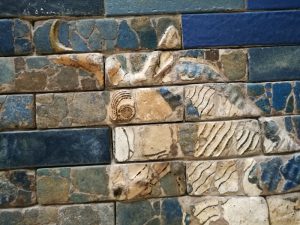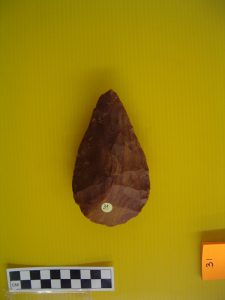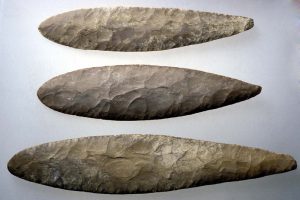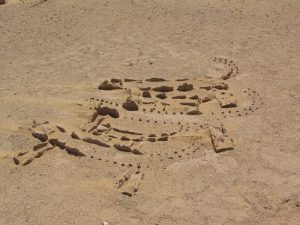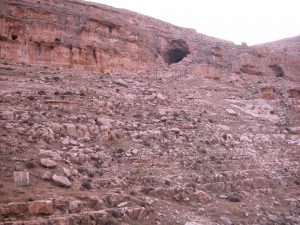Ternifine
Algeria.
All 259 tool photos are available at prehistoricglailee@gmail.com
Location – Coordinates: 35o24″N and 0o20″E. The site is located about 20 km east of Mascara, Algeria.
History of Research – The site is a quarry for building materials, in use from 1872. Pummel and Tommasini conducted the first excavation at the site in 1882, and Arambourg and Hoffstetter directed the main excavation, which has provided the sample for this study, in 1954 and 1956 (Arambourg and Hoffstetter 1963). The LCTs from this excavation were described in some detail by Balout and Tixier (Balout et al. 1967). The high water level at the excavation site necessitated continuous pumping, eventually bringing the excavation to a halt. A significant lowering of the water level was later achieved, enabling renewed excavation between 1981 and 1983 (Geraads et al. 1986, for references).
Geology – The site is located next to a small paleo-lake, which had formed in a clayey basin fed by artesian springs. The lake was swampy and even dried up from time to time. The artesian springs brought up some fine-grained sands from the underlying Miocene beds, creating a deposit. The deposit was then promptly covered by sand from the shore of the paleo-lake (Arambourg and Hoffstetter 1963).
Stratigraphy – The quarry’s stratigraphic sequence constitutes about 7 m of sands and clays. In the upper part, under the modern topsoil, a layer of sandstone protected the lower layers from erosion. At the bottom of the sequence, a layer of varicolored clay is topped by grayish clay, with carbonate nodules up to 1.5 m thick. Above this are very fine sand layers with ferruginous lenses. The thickness of the layers varies throughout the site, and in some places the sands reach a thickness of 5 m. In the center of the site, the abovementioned artesian spring activity has strongly disturbed the horizontal lie of the layers, which sometimes tilt upward at an angle of 8o. The main fossil-bearing layers are the nodular clay and the lower levels of sand (Geraads et al. 1986).
Date – The site was defined as problematic for paleomagnetic study. Those samples that were successfully tested yielded normal polarity. There is a clear faunal demarcation between Ternifine and the older site of Ein Hanech. Garaads and others (1986) have suggested an age of around 700,000 kya, which is close to the borderline dividing the Lower Pleistocene from the Middle Pleistocene. In a newer publication, Raynal and others (2001) point out a similarity between the sites of Ternifine and the Thomas 1 Quarry in Casablanca, dating the latter site to 1 mya on bio-chronological considerations. The presence of most of the faunal species throughout the site’s entire archaeological sequence suggests a relatively short duration of occupation (Geraads et al. 1986).
Human Remains – In 1954, two hominin lower jaws were found in the clay of the lower part of the section. They are still considered the oldest human remains from North Africa. Identified as Homo erectus (Arambourg and Hoffstetter 1963), both are very robust.
